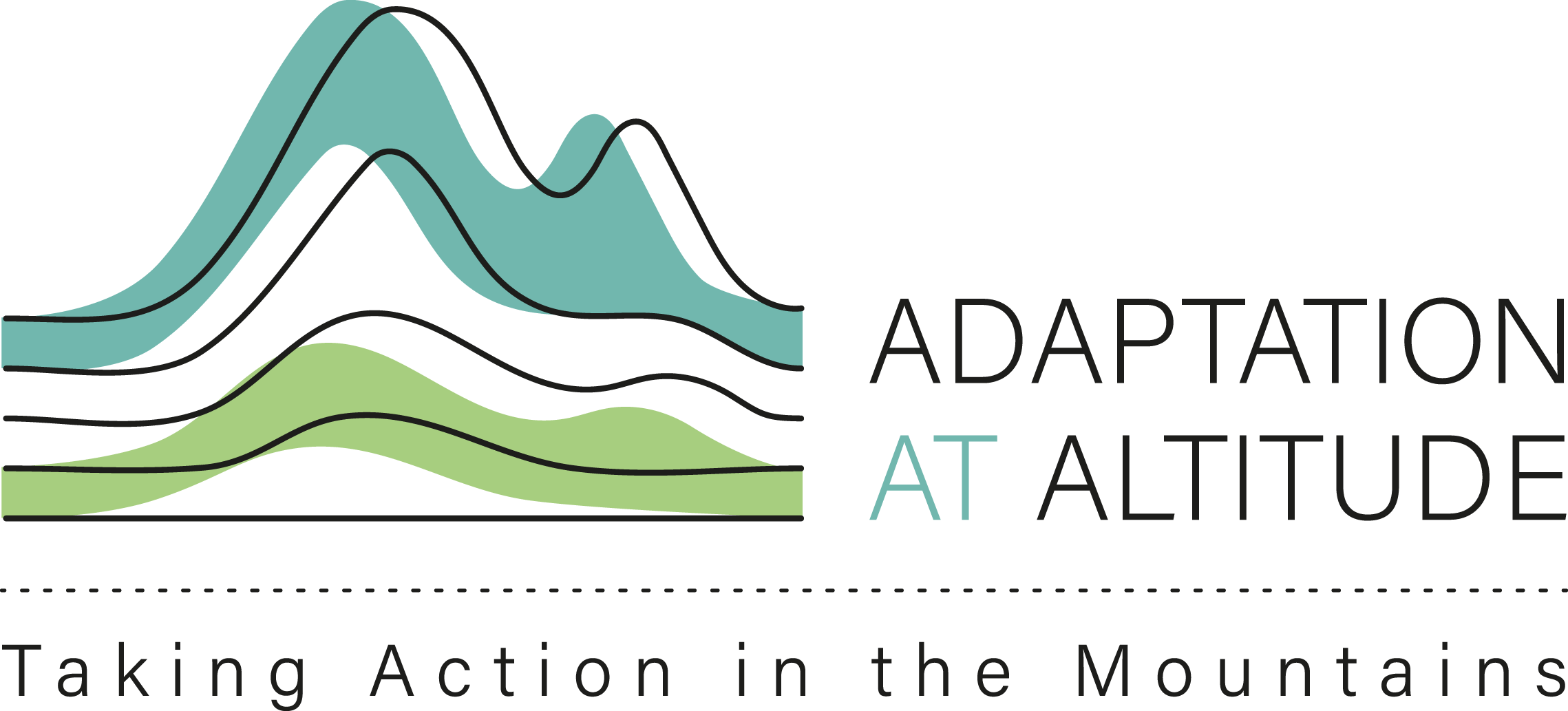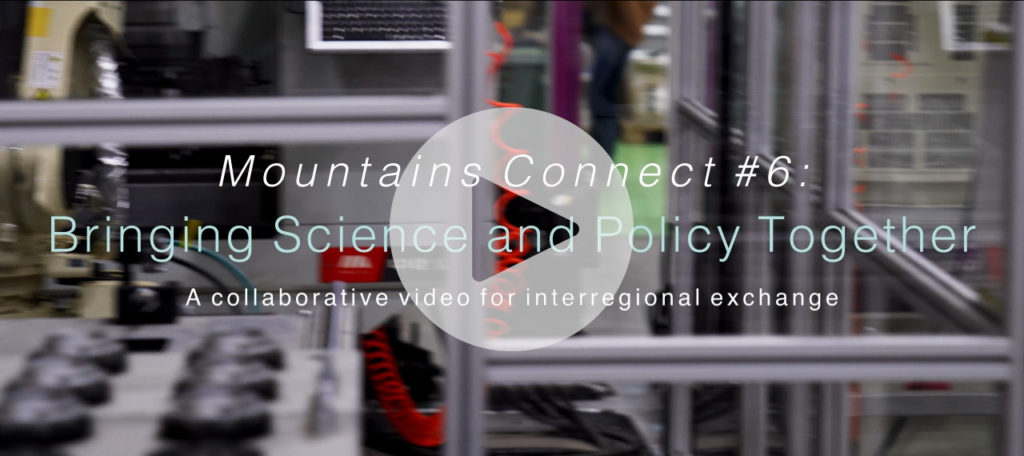Scientists often provide important inputs for mountain range governance (MRG) initiatives and so-called scientific collectives exist in almost all mountain regions. The Mountains Connect #6 video offers insights into this important aspect of MRG.
Four general types of scientific collectives can be identified: (1) Collectives of specialized scientists established independent of regional governance projects, (2) scientific collectives established to serve as counterparts of existing political projects of regional governance, (3) scientific collectives organized to be the academic counterparts of planned or abandoned political projects of regional governance, and (4) Techno-scientific collectives established to meet specific data needs of regional governance institutions.
Script & CAST
Emilie Dupuits, Professor for International Relations, University San Francisco de Quito
As climate change in mountain regions intensifies, bringing together science and action has become more important than ever. In many mountain ranges around the world, scientists, practitioners and decision makers are working together in different ways. As a result, various forms of policy-science interfaces have emerged that aim to support sustainable mountain development.
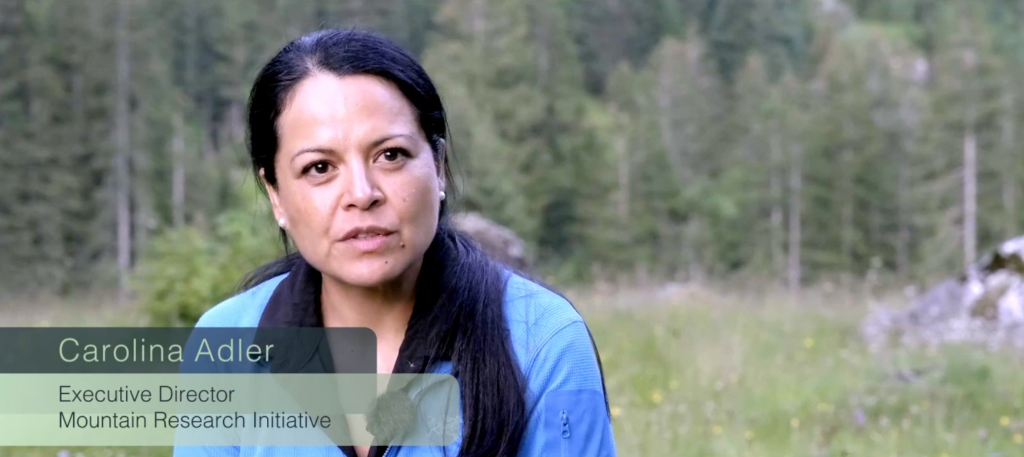
Carolina Adler, Executive Director, Mountain Research Initiative
Science-policy interfaces are important in the way they bring scientists and policy makers together in an exchange of knowledge, in an exchange of understanding what the other one can offer versus what the other one needs, and vice versa. In other words, it is a way of calibrating scientific input to what is actually relevant, the questions that are relevant to be answered by the policy makers.
María Argüello, Executive Director, Consortium for the Sustainable Development of the Andean Ecoregion (CONDESAN)
For CONDESAN, working at the science-policy interface is key because it becomes increasingly evident that to inform all the processes of development at the national, subnational, and local levels, robust and timely knowledge is required, allowing to take the best decisions and transform public investment funds into actions generating expected impacts in a short amount of time.
Eva Garcia-Balaguer, Coordinating Officer, Pyrenees Climate Change Observatory (OPCC)
My work is the coordination of the Pyrenees Climate Change Observatory [OPCC], where science and policy are in contact every day. It is an interconnection that is essential for the definition of our observatory, it is our way of working.
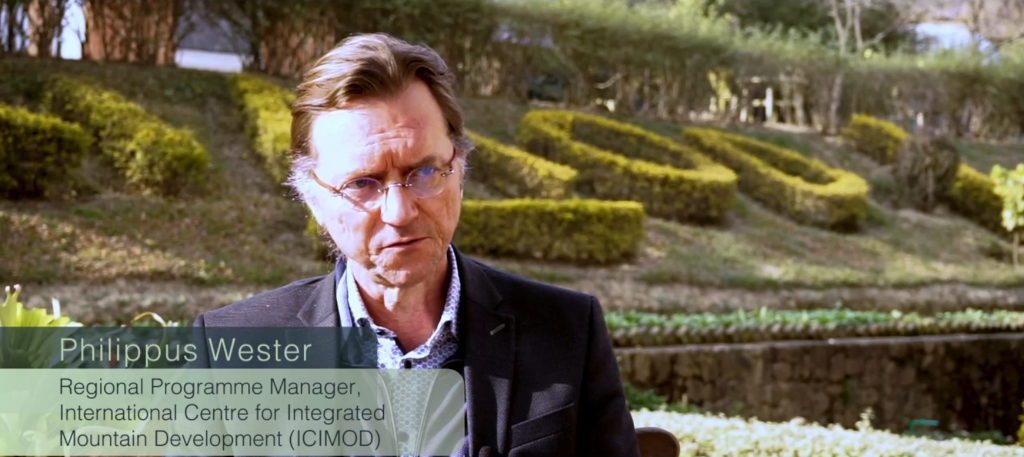
Philippus Wester, Regional Programme Manager, Mountain Knowledge & Action Networks (MKAN), International Centre for Integrated Mountain Development (ICIMOD)
In my own direct work, what is really important is assessment, synthetizing evidence around mountain research into a way that becomes policy-relevant and that we can speak to policy-makers. An example is the HKH assessment report which I led, bringing together 210 authors to assess the state of knowledge of the Hindu Kush Himalayan region. Based on that, coming with policy-relevant recommendations. More broadly our Centre, the International Centre for Integrated Mountain Development based here in Kathmandu is intergovernmental, it’s a regional organization owned by our eight member countries and all of the work we do intersects between science, policy, and importantly practice in really influencing what happens on the ground.
Emilie Dupuits
Whether a science-policy interface is successful in supporting sustainable mountain development depends on three key factors. First, the organization of knowledge production. Are scientists formally organized at the scale of the mountain range as individuals or a network of organizations? Do they have formal meetings and formulate common positions? Second, it depends on the policy side of the interface. Is there a history of regional collaboration on mountain issues? Are there current or planned formal mechanisms for policy coordination, implementation, and learning? Is knowledge recognized as legitimate by policy? And third, the relationship between scientists and policy makers needs to be considered. Is the interface a web of individual contracts or systematically planned ones? Is there a mechanism for funding policy-relevant data? And finally, is mountain range governance primarily driven by a science-policy interface organization?
Key factors to consider for science-policy interfaces
- The organization of knowledge production
- The policy side of the interface
- The relationship between scientists and policy-makers
Eva Garcia-Balaguer
The collaboration between science and policy allowed establishing the first transboundary Pyrenean Climate Change Strategy. As a starting point, a scientific diagnostic was elaborated throughout the years by sharing observations, methodologies, and analytical tools, going through an interdisciplinary orientation. It established the main course of action to finance and support at the level of the Pyrenees. For the Pyrenees, from the perspective of transboundary cooperation and climate challenge, the most important challenge is to develop tools for the Pyrenean Climate Change Strategy and its implementation. We have achieved a powerful process of co-production to allow the best appropriation of the Strategy’s content. In fact, we are really happy about the participatory process and the level of involvement we obtained. The legitimation will come from the bodies of the Working Community of the Pyrenees (CTP). The seven presidents of the Pyrenean territory are those who are going to visualize and ratify this Strategy. We will of course look for European recognition, which is an important challenge.
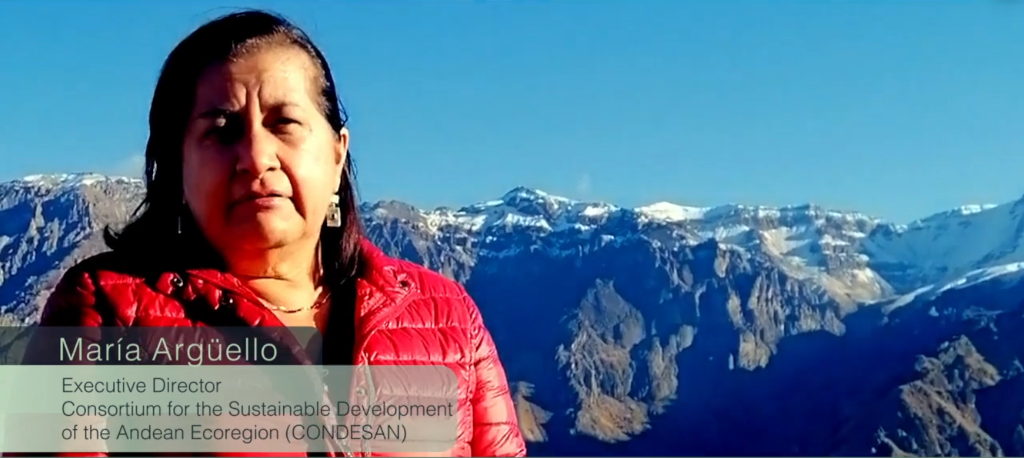
María Argüello
There are various examples of this science-policy interface in the Andean region. In Ecuador, for example, a lot of work has been done on the national restoration program. Ecuador, like some other countries in the region, during the past few years has sought to promote the restoration of degraded areas, in part to meet its international commitments. For this, public funds have been allocated. According to some studies, however, not only in Ecuador but also at a regional scale we have seen in many programs that knowledge about degraded areas is based on observations made at lower elevations, such as tropical forests, and does not necessarily fit with the social, ecological, economic dynamics of mountain landscapes.
Philippus Wester
I think a really exciting mechanism for regional mountain governance that we’re seeing emerge now in the Hindu Kush Himalaya is the HKH Ministerial Mountain Summit. So the first Summit was held in October 2020, the eight countries came together at the ministerial level and the Ministers produced a Declaration saying that they would like to meet once every two years and convene a Ministerial Mountain Summit in combination with the HKH Science-Policy Forum.
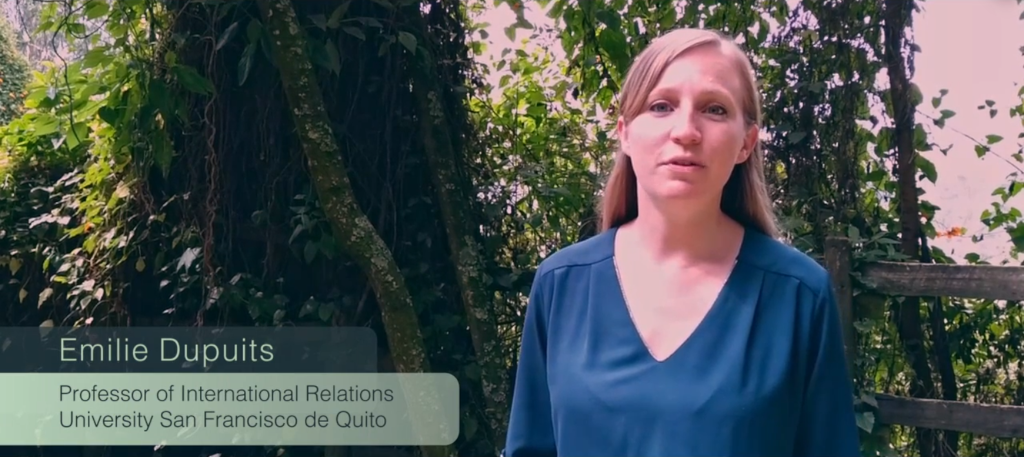
Emilie Dupuits
Science-policy interfaces vary according to how scientists organize themselves, whether and how transboundary policy coordination is structured, and how relationships at the interface work. They are also very dependent on larger governance structures and social context. When looking at requirements for scientific participation, value recognition of research for policy, available funding, and a competitive research spirit emerge as important points.
Variations in science-policy interfaces
- How scientists organize
- How transboundary coordination is structured
- How relationships work
Carolina Adler
One of the biggest challenges that we observe in the science-policy interface is treating the interface as an opportunity to just simply hand over reports or hand over information with the expectation that that would be enacted in itself, or by itself or because of it. What we in fact need is something more of a dynamic exchange between science and policy to find ways to implement the options and opportunities that science is informing for policy in that context. Another big challenge that we face is the opportunity to bring other voices and other forms of knowledge to inform about policies in the sustainable development context. In other words, how do we make and legitimize other forms of knowing besides science. There are traditional knowledge, indigenous knowledge, other ways of understanding what matters to people and what actually works to respond to the needs of people.
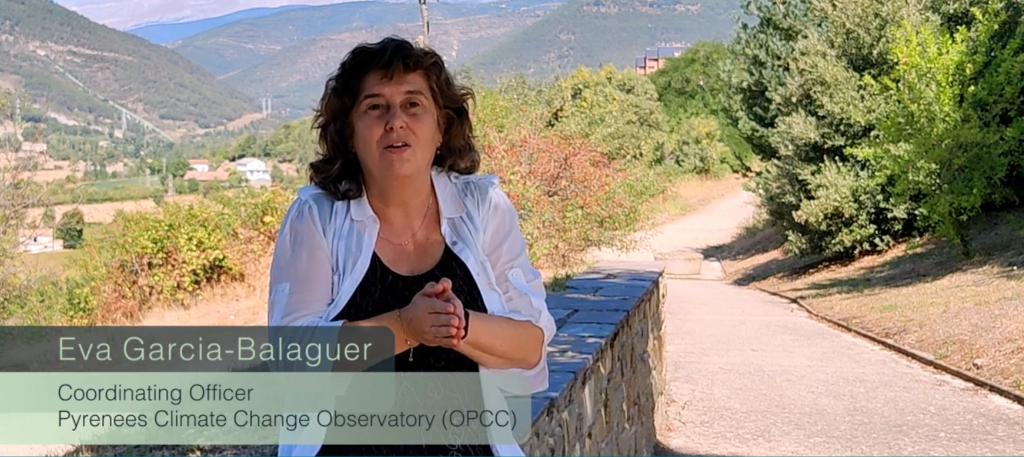
Eva Garcia-Balaguer
We now know that facing climate change adaptation in mountain ranges is urgent and of great complexity. The Pyrenees, which is a mountain range that retains the southernmost glaciers in Europe, and which has a clear Mediterranean influence, needs a tool such as the Pyrenees Climate Change Observatory. It is a very valuable tool, whose main strengths are its mode of operation and its transboundary, collaborative character. These have allowed us to learn, gain new insights, attract attention through funding and activities to deal with the Pyrenees’ uniqueness.
María Argüello
Countries and regions all over the world must institutionalize research. Right now, there are various research networks in the region that have supported this type of institutional processes, but they have been sustained by the passion and voluntary engagement of researchers and organizations that have allowed these processes to go on.
It is increasingly important that these types of research processes can be institutionalized and receive the right funding because they have collected important knowledge. On the other hand, research should become more interdisciplinary.
Currently, we are more focused on ecological processes as well as on biophysical processes but not necessarily on what is happening in terms of socio-economic dynamics and how these influence land and soil degradation or climate change.
Lastly, all the processes of ecological transition need agreements. It is increasingly evident that we need to sit down together at the table and agree on how territorial management should be handled, given the multiple visions and multiple rights, and considering that communities hold their own land and resource rights. Decision-makers have to support here as well.
Philippus Wester
Of course a big challenge is data sharing between research institutes, universities, government agencies, so within our region among our eight countries this is really quite sensitive, and frequently government agencies actually are legally restricted from sharing data so even if they would want to, that is difficult.
Emilie Dupuits
In conclusion, evidence-based or evidence-informed mountain range governance is facilitated where diverse sources of knowledge are recognized as credible, legitimate and relevant; mountain range governance is supported by shared goals and structures; and interactions at the interface are regular and continuous.
Key Lessons
Evidence-based mountain range governance is facilitated where
- credible, legitimate and relevant sources of knowledge exist
- goals and structures are shared
- interactions are regular and continuous
Organizations appearing in the video
- Mountain Research Initiative (-> link)
- Universidad San Francisco de Quito (-> link)
- Consorcio para el Desarrollo Sostenible de la Ecoregión Andina (CONDESAN) (-> link)
- Pyrenees Climate Change Observatory (-> link)
- International Centre for Integrated Mountain Development (ICIMOD) (-> link)
